*This post MAY contain affiliate links. That means that if you make a purchase after clicking on a link I may earn a small commission at no extra cost to you. I don’t ever recommend something that I don’t use myself. Not all links are affiliate links. For more information, see our Privacy Policy.
Choosing Quality Quilt Fabric
How do you choose the best quality fabric for your quilt? Quilt shops, magazines, and patterns will tell you to choose quilt shop quality fabric, but what does that mean exactly?
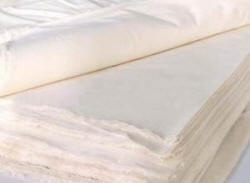
To understand what “quilt shop quality” fabric is, we have to go back to the beginning. Before cotton cloth is printed at the mill, it is called greige (pronounced gray) goods. The higher the thread count of the greige goods, the higher the quality of the cloth will be. The picture on the right showing greige goods is courtesy of a Fair Trade website that explains how cloth can be obtained ethically.
Greige Goods Quality
Thread count is determined by how many threads there are per square inch. This is counted both vertically (the warp thread on the loom) and horizontally (the weft thread on the loom.) Generally speaking, a higher thread count means a better quality or softer fabric. This makes a better printing and dyeing surface creating a smoother and tighter finish. Of course, the quality of the thread matters, too. Thinner threads can be woven more tightly, increasing the thread count.
Inexpensive greige goods might have a thread count of less than 60 x 60 threads to the inch. This is sometimes called 60 square. It may be thin or stiff and it shrinks a lot in the wash. Expect your batting to migrate or beard through these widely spaced fibers over time.
Better fabric has a thread count of 68 x 68 or more and is made with long-staple cotton thread. This makes it feel a little softer, accept dye better and have a longer life. It will still shrink a little in the wash, but not as much. PFD (prepared for dying), Pima cotton, cotton sateen, and batik fabrics can have up to a 220 thread count. They generally don’t shrink at all.
How are low quality greige goods used?
The first time a mill prints cloth, they will usually do so on lesser quality greige goods in order to test the colors and the placement of the designs. Look at the selvage of fabric you have just purchased. See those color dots? They aren’t there to help you choose coordinating fabrics, although many people use them that way. They are there for the manufacturer to ensure the color was correctly printed in the right place.

The printing process manufacturers use can be quite complicated. Fabric designers work about a year in advance to come up with the concepts which are then converted into colorized designs. These designs are sent overseas to the mills to be test printed and returned to the manufacturer for approval. Most of the quilt fabric we use today has been printed in Korea or Japan.
Feedsacks
In the 1920s-1940s, mills would test their prints on low-quality greige goods. These low-quality greige goods later became feedsacks. The picture below shows a cheater cloth grandmother’s flower garden print fabric, plus a feedsack in the same print. The feedsack would have been printed first to check the design.

In today’s market, these first run tests often become the flat folds that you purchase in discount stores. These flat folds may be printed on lesser quality fabric which won’t last. Hold the fabric up to the light. If you can see through it, it probably won’t last. They could be printed on good fabric but the colors and/or designs weren’t up to manufacturers’ specifications. Some flat folds are printed as deliberate knock-offs of a popular design. If you compare it to the original design, you will see that the colors are a bit off. Apart of the design (like a leaf or a vine) might be missing.
Knock-Off Fabric
Here are some pictures from a problem Tula Pink faced in 2010. An unknown company copied her fabric almost exactly and sold it to Wal-Mart. Unfortunately, the fabric quality was very poor. Quilters purchasing what they thought was Tula Pink fabric at a discount were very disappointed.
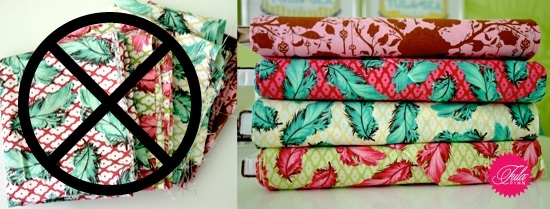
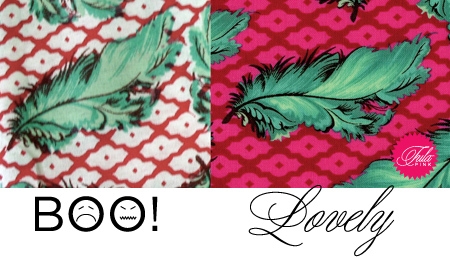
Quilt fabric also goes through a multi-step finishing process, which sets the dyes and makes the fabric softer. Inexpensive fabric skips the last couple of steps, resulting in a stiff fabric that wrinkles easily and is very susceptible to bleeding and/or sun fading. Because it is less expensive to make, fabric that is quickly printed to take advantage of a trend like a hot cartoon character often skips those last few steps. Manufacturers believe people buy it without planning on any long-term use.
Whenever you make a quilt, use the best quality fabric you can find. Don’t frustrate yourself by using second or third best. You will be happier with the process and prouder of the end result.
For More Information
For more information, read Harriet Hargrave’s From Fiber to Fabric; the essential guide to quiltmaking textiles. It’s an excellent book that takes you from the cotton boll to the finished product. You’ll learn about the history of textiles, how fabrics are manufactured, prepared, and dyed; and how they are printed and finished. The book offers numerous tests to help you determine the quality of fabric.
Don’t forget to sign up for the newsletter! Once a week, I send updates on quilt-related information I have found. This might be an inspiring article or a tip or tutorial I have discovered (or written). Occasionally I will have exclusive offers & discounts as well as immediate access to the secret page of free patterns, guides, and printables. You can follow my page on Facebook, or join the Make Believe Quilters group, too.
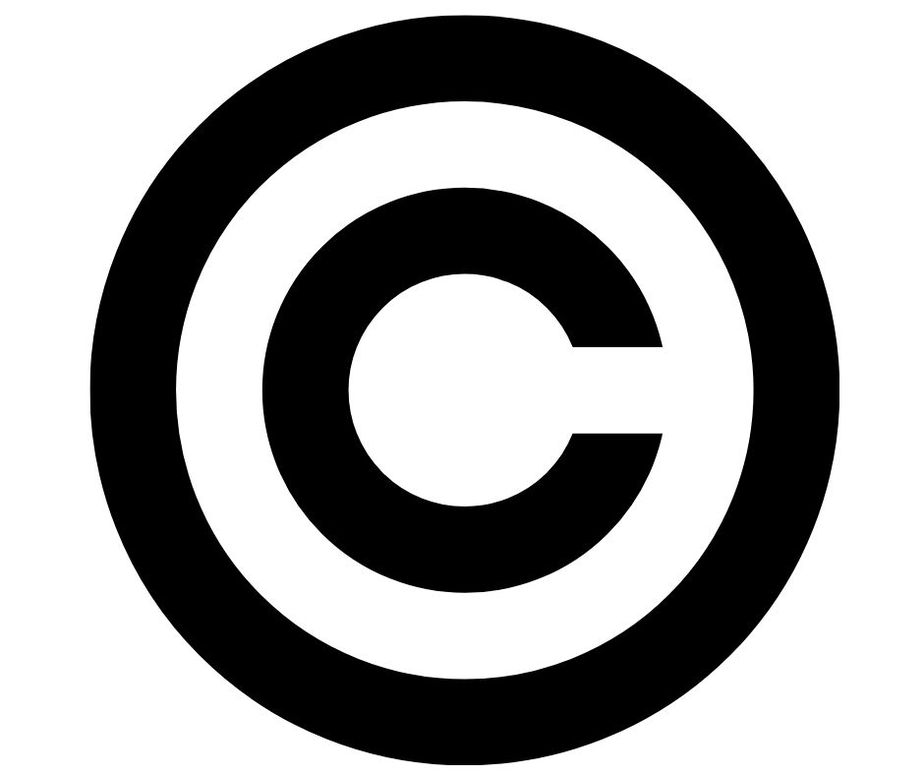
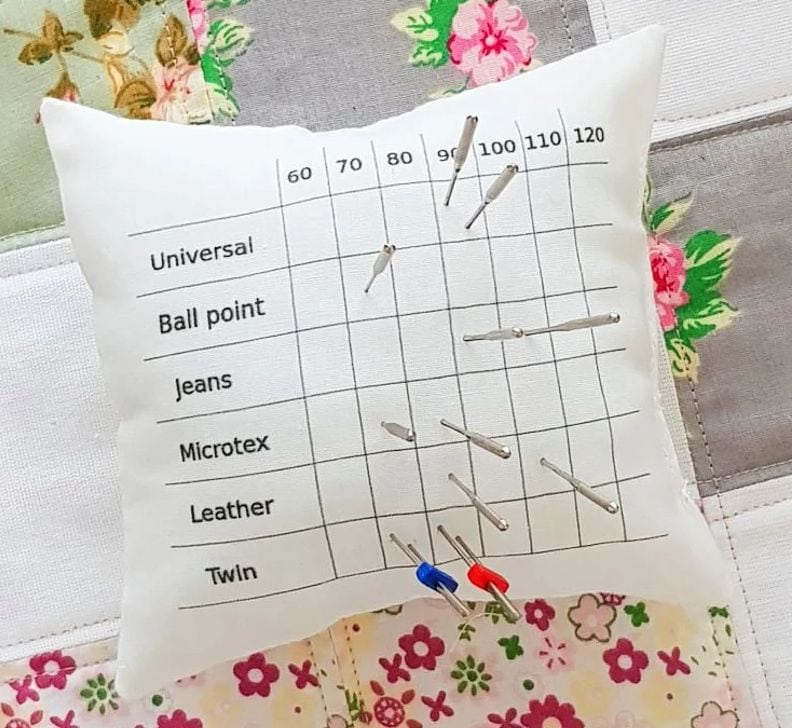
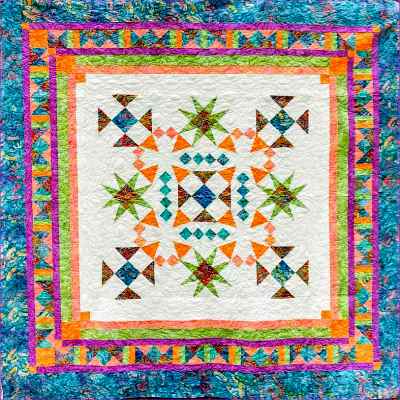
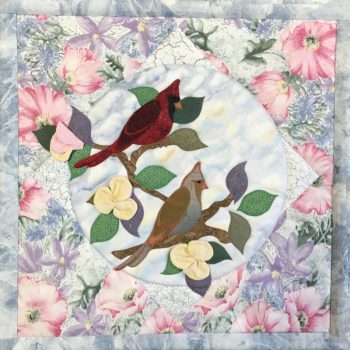

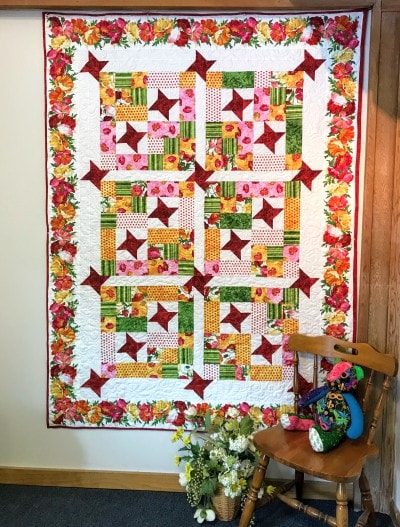
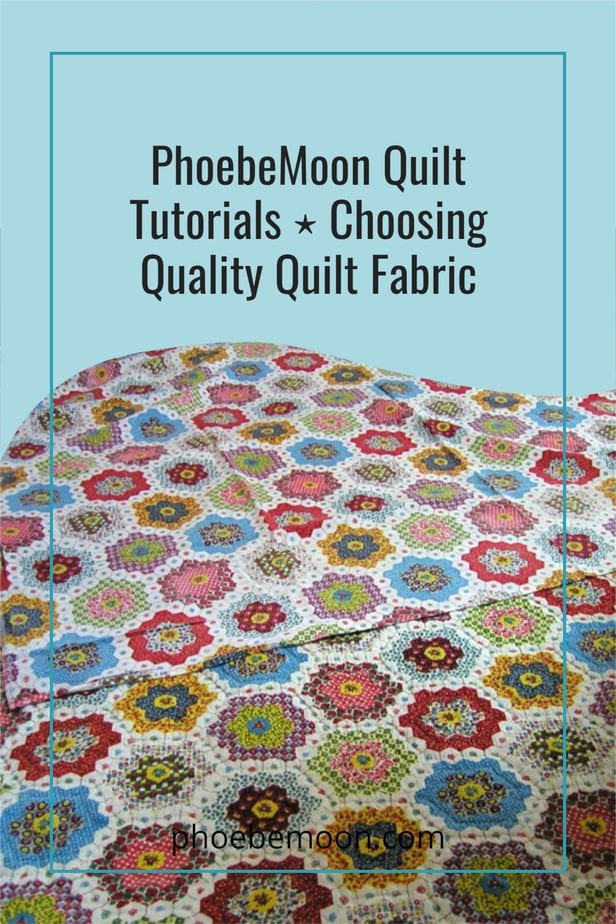
This was very informative Thank you